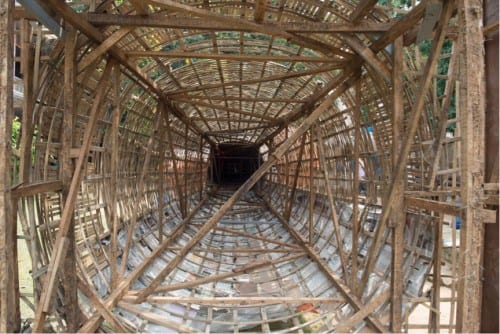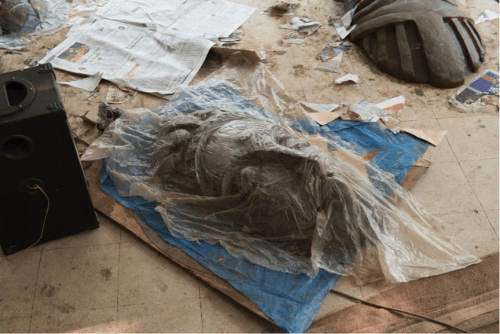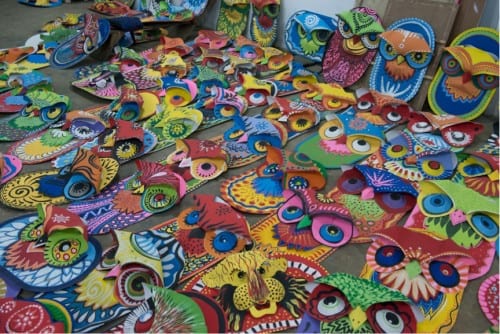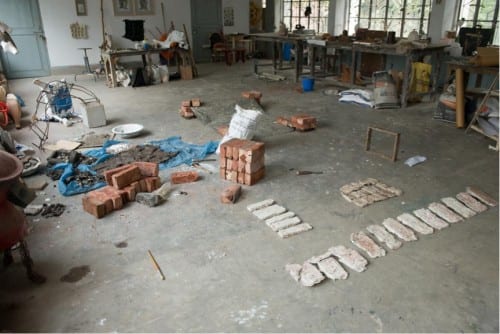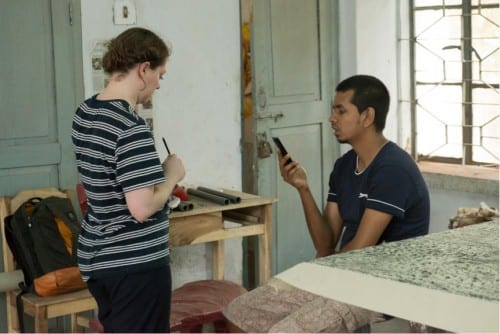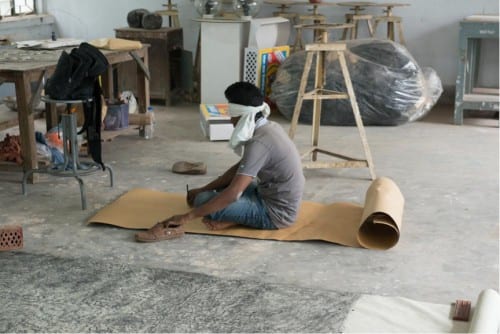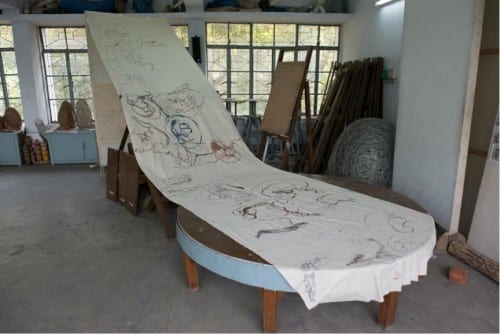Dhaka in Pictures – Sam Llewellyn-Jones
By ucwajgo, on 31 July 2015
Preparations for the Carnival
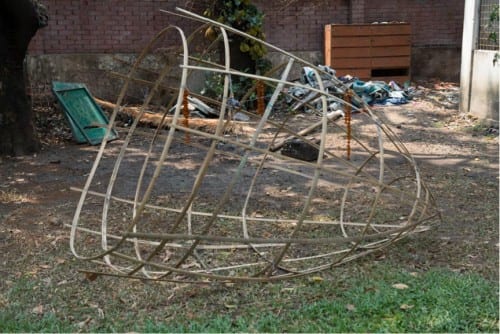
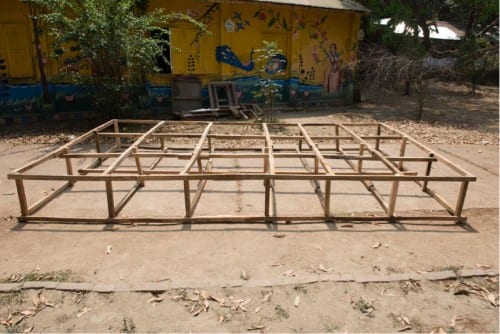 The large folk sculptures made annually for the New Year carnival begin life as simple forms, constructed from flexible bamboo strips and lengths of timber.
The large folk sculptures made annually for the New Year carnival begin life as simple forms, constructed from flexible bamboo strips and lengths of timber.
The fine art faculty was covered in an array of structures at different stages of completion. Ladders, scaffolding and platforms of different sizes were built and modified as they were needed.
Inside one of the structures. Lengths of timber nailed together provide a strong frame to then cover in the thin strips of bamboo. The result is an extremely robust structure that can easily support the weight of a person.
 The beautifully simple tools used to fix the bamboo strips. 2mm steel wire is wrapped around a small piece of wood. This can then be passed through the small openings of the structure, and the joints can be tied together.
The beautifully simple tools used to fix the bamboo strips. 2mm steel wire is wrapped around a small piece of wood. This can then be passed through the small openings of the structure, and the joints can be tied together.
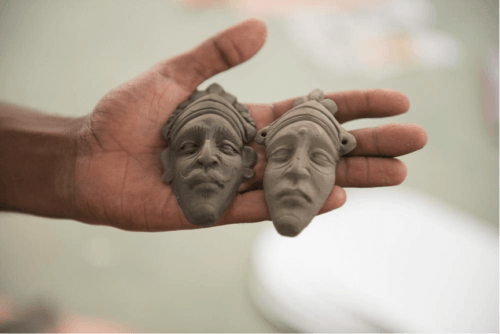 Large of numbers of small, handmade folk figures are carved from clay and are sold during the build up to the celebrations to members of the public who visit the campus.
Large of numbers of small, handmade folk figures are carved from clay and are sold during the build up to the celebrations to members of the public who visit the campus.
A small number of larger faces are carved from clay, left to dry and harden and then covered in thin plastic sheeting. These can then be used to ‘mass produce’ multiples of masks in paper mache, which are then hand painted.
Countless masks of either tigers or owls are made from card and hand painted.
Materials
Bamboo scaffolding used to support concrete shuttering by construction workers.
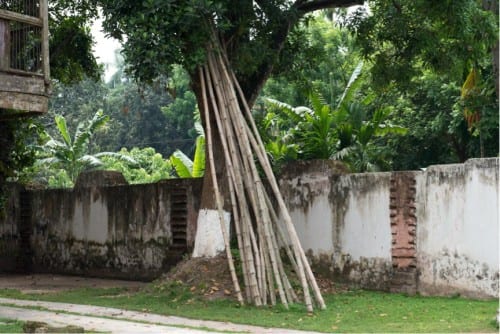
 Our local art shop in New Market that sold a range of hand carved, wooden blocks used for printing onto textiles.
Our local art shop in New Market that sold a range of hand carved, wooden blocks used for printing onto textiles.

Pipe sections being cast in concrete on the roadside.
The students arranged for us to visit a traditional Bangladeshi bronze foundry outside of Dhaka. Here the process of lost wax casting was used to produce a range of sculptures. This is the kiln used to fire the clay that is used as the mould, into which the molten bronze is poured.

We happened to find a workshop near by that was hand making roof tiles from clay, and air-drying them before firing.
 Stacks of paper and card at the paper market.
Stacks of paper and card at the paper market.
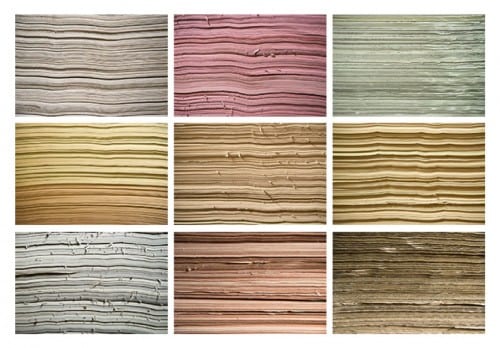
A small selection of some of the paper available in the markets.
In the Studio
The sculpture studio after a day of work.
Olivia and Alok ordering some plaster.
Shochi working in the studio.
Oni’s installation in preparation for a group crit.
An installation of the work I made over the course of the month.
 Close
Close




